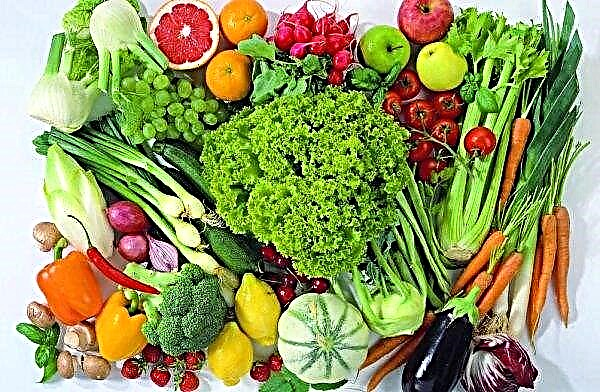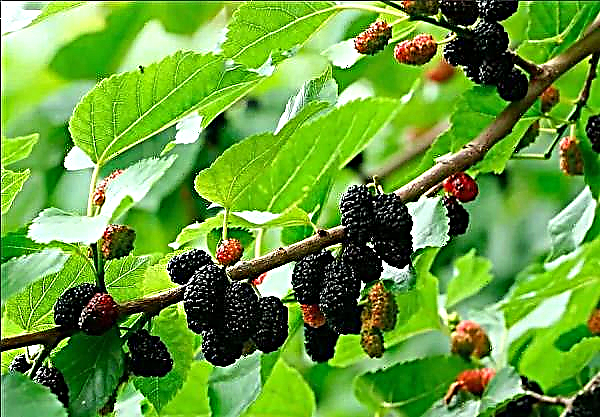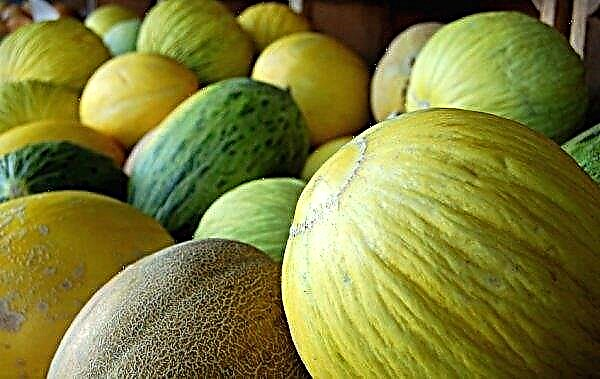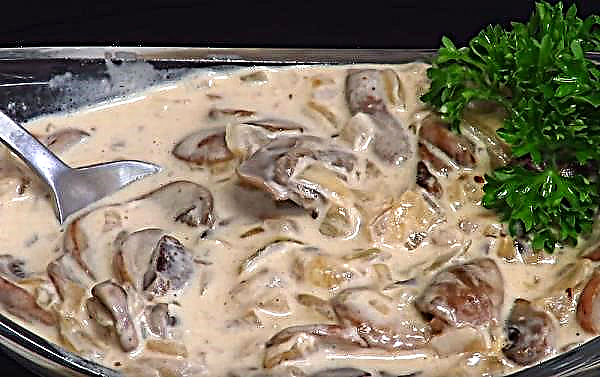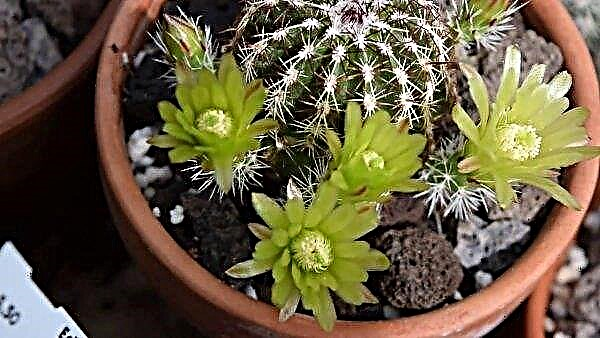Among the most popular tomato varieties among gardeners is cream, although this is not even a single species, but a whole group of tomato varieties. They gained such popularity due to their wonderful taste, unpretentiousness in leaving and beautiful appearance. Today, breeders present a wide selection of varieties within this species, and in this article we will consider the most productive of them, and also learn how to properly care for them.
Description and characteristics of tomato
"Cream" is known worldwide for its unusual oblong shape, reminiscent of the fruit of the same name.
Other characteristics of these tomatoes include:
- dense peel, thanks to which they can be preserved whole;
- sweet taste, leaving a pleasant aftertaste;
- universality of application - salads, sauces, soups, preservation, etc .;
- a small amount of liquid in the composition, because of which the cream is not used for the preparation of juices;
- low calorie content, because in 100 g of fruits there are only 22 kcal;
- excellent adaptability to transportation;
- high productivity both in the open ground and in greenhouses;
- fruit weight - 50–90 g, although some varieties are able to produce specimens up to 250–300 g;
- a variety of colorings of tomatoes;
- average branching of bushes;
- dark green color of leaves;
- the presence of complex inflorescences of a light yellow hue;
- the average height of the bush is up to 40–70 cm, although some subspecies are more than 1.5–2 m.
Did you know? The world is still debating about the biological classification of tomatoes. Nerds claim it is a berry. In the USA, the court ruled that tomato is a vegetable, because it can be eaten raw and it is not a dessert. But the European Union defines tomato as a fruit.
Variety varieties
Now let's talk about the most famous varieties of cream tomatoes. The following types can be included in this list:
- "Sugar Cream." This is a variety bred in Russia for greenhouses and open ground, giving a yield of up to 8 kg per square meter. m. It is distinguished by an impressive bush (up to 1.5 m high), so you can not do without a garter. Its fruits are cast with a red-raspberry shade, which is why the species has a second name - "Raspberry Cream";
- "Cream red", or "Nasko". Mid-early variety, which is characterized by high taste, strong immunity, long-term storage, so it is actively grown for sale on an industrial scale;

- "Cream of pink." This variety is surprising in its productivity, allowing you to collect up to 20 kg of tomatoes from one bush. In addition, one brush can consist of 15–20 fruits. To maintain a generous crop, the plant has strong stems and strong roots;
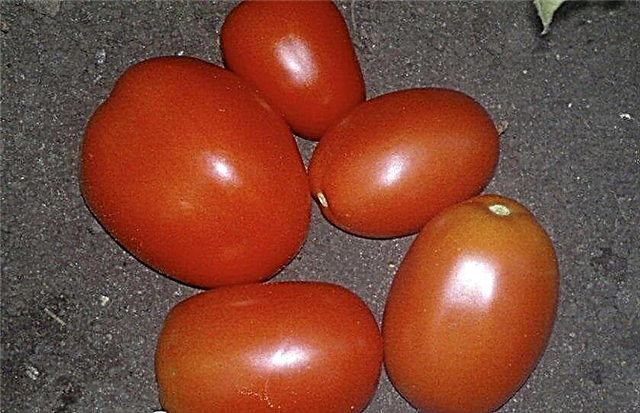
- "Orange Cream." Mid-season semi-determinant variety with low (up to 1.2 m) bushes stands out for its unusual bright color of fruits and resistance to temperature fluctuations. Although orange tomatoes are small (only 50-60 g), they are rich in carotene;

- "Big cream." This variety is suitable for those who are looking for an early appearance with a small, compact bush and a sweetish taste of fruits;
Important! The name arose because of the size of the tomatoes: on average, they reach 90–100 g in weight. Moreover, they have a dense skin, and inside there is a juicy, elastic pulp with a small amount of seeds.
- "Moscow Cream". Early ripening variety, bearing fruit within 100-110 days after planting seeds. It can be used both in open ground and in greenhouses. It is also famous for its high productivity and stable immunity;
- "Chocolate cream." The name of the variety arose thanks to its original red-brown color. “Chocolate cream” is grown only in greenhouses, but harvesting is possible already 90–95 days after planting. Small fruits (up to 30-50 g) with a sweet taste are perfect for salads and preservation;
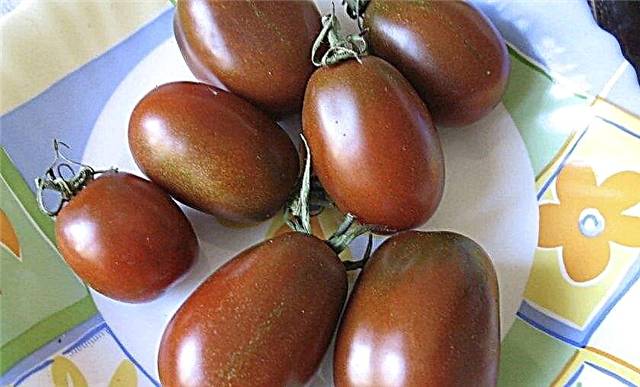
- "Giant yellow cream." Gardeners like this view for its unpretentiousness, excellent taste and size. Large fruits of a heart-shaped or elongated shape often reach 300 g, while pleasing with a beautiful yellow-orange color. The height of the bush often exceeds 1.5 m, so you can not do without a garter;
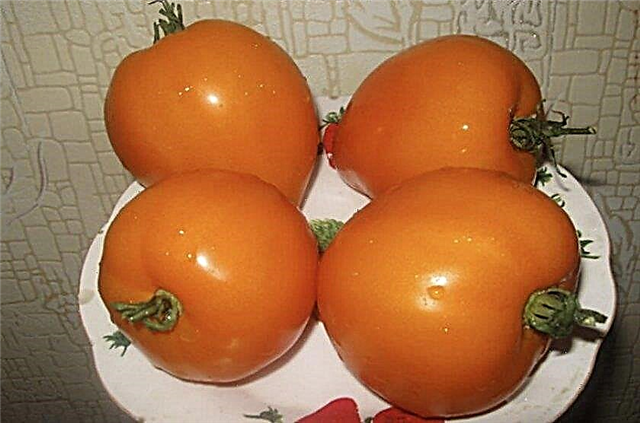
- Royal Cream. Early ripening variety, which is usually grown under a film in open ground. His bush is small, only 60–75 cm in height, but at the same time the species shows excellent productivity. “Royal” tomatoes are distinguished by elongated cylindrical shape and pleasant aroma;
- "Brazilian cream." The variety with such an exotic name has a tall bush (up to 1.5 m), medium-sized bright red fruits (up to 60–70 g) pear-shaped with a sweetish taste. It is grown only in closed ground, but the scope of these tomatoes is not limited;
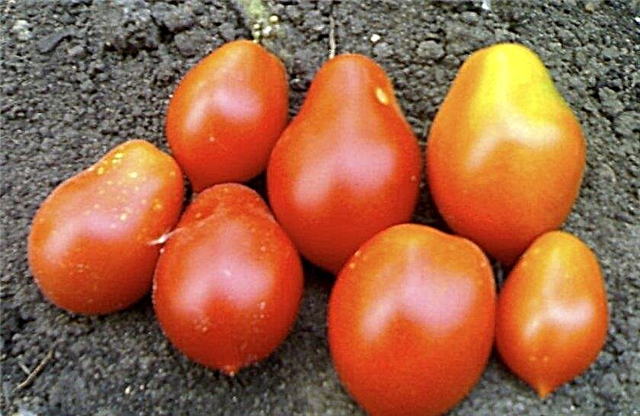
- "Argentinean plum red." Harvest variety of medium ripeness with a tall bush (up to 2 m) and beautiful cream fruits. The excellent taste and small size (up to 80 g) of tomatoes made the species an ideal option for conservation. At the same time, the "Argentinean" rarely gets sick or suffers from pests;
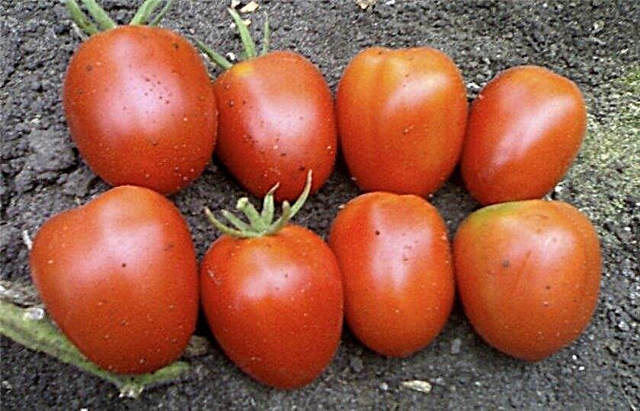
- "Black Plum." Another mid-season variety for open ground with very tall (up to 2.5 m) bushes on which fruits appear in 110–120 days. Their color is not always completely black; rather, it varies from dark red to violet blue;

- "Honey cream." Resistant to disease, unpretentious in the care of the variety, which is perfect for growing gardeners, beginners. Among the advantages of this species is the bright red color of fruits with a wonderful sweet taste, the weight of which rarely exceeds 50–70 g.
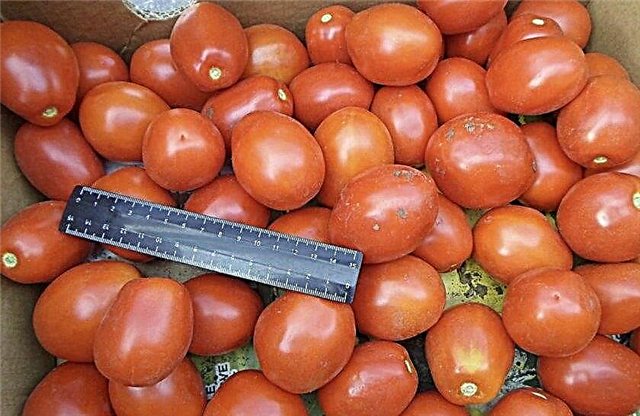
Did you know? In alternative medicine, tomatoes are often used as a medicine for burns and wounds. Their pulp contains volatile, which prevent the development of infections.
Advantages and disadvantages
- The advantages that are inherent in the whole group of varieties of tomato cream can be reckoned:
- high productivity (from 7 to 20 kg);
- great taste;
- uniform ripening of tomatoes;
- wide range of applications;
- beautiful appearance;
- the possibility of long-term storage;
- simple cultivation technique;
- resistance to diseases and pests.
- As for the shortcomings, the following can be attributed to them:
- the need for regular dressing and watering, without which there will not be proper productivity;
- not everyone likes the sweet taste of the fruit.
Features of growing tomatoes
In the climatic conditions of Eastern Europe, the cultivation of tomato cream is carried out by the seedling method.
Suitable conditions
First of all, choose a place where you put containers with seedlings. This should be a room that will meet the following requirements:
- temperature. In the first days after sowing, it must be kept at + 23–25 ° С, after emergence of shoots it can be lowered to + 18–23 ° С in the daytime, and at night - up to + 12–15 ° С;
- lighting. Tomatoes are very fond of light, they need at least 14 hours of daylight. It is especially important to observe this rule at the stage of initial growth, so that the plant does not deform and does not lose a healthy color;
- humidity. Tomatoes love moist air, so it is advisable to put a humidifier in the room or spray the seedlings 2 times a day.
Did you know? If you consider a tomato as a fruit, then it is the most popular fruit in the world. On average, more than 60 million tons of tomatoes are grown annually, while bananas - only 44 million, and apples - only 36.
Sowing seeds
Before planting seeds, it is necessary to prepare:
- disinfect the seed;
- select and disinfect the soil.
 The seed can be decontaminated by the following methods:
The seed can be decontaminated by the following methods:- potassium permanganate solution (1 g per 100 ml). In the solution, gauze should be wetted, and then seeds should be wrapped in tissue for 15–20 minutes;
- soda solution (0.5 g per 100 ml). If you soak the seeds in it for 24 hours, then they will sprout earlier, and not only will be disinfected.
As for the soil, a mixture of garden soil (neutral or slightly acidic), humus, sand is suitable for tomato seedlings. If desired, a suitable substrate can be bought in specialized stores.Important! Watch the time, because if you overexpose the seeds, then this will negatively affect their germination.
In any case, the soil must be disinfected before planting the seeds. For this:
- hold it in the oven for 10-15 minutes at a temperature of 180-200 ° C;
- putting the soil in a pot with drainage holes, treat it with boiling water;
- disinfect it with potassium permanganate (you can use the same solution that was used for seeds).
 For the best effect, combine the proposed options. Then wet the soil well and leave it for about 10 days in a warm room: in such conditions, useful trace elements will arise in the soil.
For the best effect, combine the proposed options. Then wet the soil well and leave it for about 10 days in a warm room: in such conditions, useful trace elements will arise in the soil.Landing is carried out in mid-late March according to the following scheme:
- Fill the selected container (cups, boxes, pots) with the prepared substrate.
- Make grooves in containers up to 1 cm deep with distances of 4-5 cm between them.
- Place the seeds in the recesses with an interval of 1–2 cm. The more space between the plants, the less need for further picking.
- Then sprinkle the grooves with soil and rearrange the containers with future seedlings closer to the heat source.
Important! To create a better microclimate, cover the container with plantations with a film.
Seedling Care
The first shoots appear already on the 5-7th day after planting the seeds. After that, you need to take care of them correctly:
After that, you need to take care of them correctly:
- water in a timely manner. Tomatoes love water, but its excess threatens them with the appearance of fungi and mold. Therefore, moisten the soil only after it has completely dried. If the plantations were covered with a film, then remove it gradually so that the seedlings get used to the fresh air and gradually dry out;
- provide an acceptable amount of light;
- feed with fertilizers. Do this once every 2 weeks, watering plants with organic matter (biohumus, manure, etc.) or with specialized mixtures;
- temper them with fresh air. When the seedlings grow up, and the temperature in the street will stay above + 15-18 ° C, it should be taken out to fresh air. Just avoid direct sunlight so as not to scorch sensitive shoots. Accustom seedlings to the sun gradually, leaving first for 5 minutes, then for 10, 15 and so on to develop resistance to ultraviolet;
- to pick. If the seeds were not planted in individual containers, then after the appearance of the first leaves (on days 7–10), young shoots need to be planted in separate pots or glasses.
Did you know? Red tomatoes have more vitamins than yellow tomatoes.
Planting seedlings in the ground
The fact that it is time to transplant seedlings is evidenced by several factors:
- night frosts have already stopped (usually this is the end of May – beginning of June);
- seedlings have already formed a strong trunk and a well-developed root system.
 Carry out the transplant carefully, transferring each shoot along with a lump of earth. Moreover, on an area of 1 square. m place no more than 3-5 bushes. Pour some water into each well before placing a seedling. Place the greenery at a right angle so that the stem sank into the ground by a quarter or even a third.
Carry out the transplant carefully, transferring each shoot along with a lump of earth. Moreover, on an area of 1 square. m place no more than 3-5 bushes. Pour some water into each well before placing a seedling. Place the greenery at a right angle so that the stem sank into the ground by a quarter or even a third.Important! If there are strong winds or precipitation in your region, then you should definitely add a peg to the hole, which serves as a support for the future bush.
Care Features
To make strong and productive plants from excellent seedlings, it is necessary to provide them with proper care.
Watering and fertilizer
Proper watering of tomato bushes is carried out under the root - it is better not to allow moisture to get on the greens. Well, if there is an opportunity to organize spot or drop watering.
To begin with, it is enough to moisten the soil 1-2 times a week to prevent drying out. In the future, the number of irrigations can be increased up to 3 times, using 5-6 liters per 1 sq. m, and on especially hot days - 9-10 liters. The procedure should be carried out in the afternoon or in the evening. After moisturizing, it is periodically necessary to fertilize the soil. Usually this procedure is carried out 3-4 times for the entire time or almost every 2 weeks. The first dressing should be carried out 20 days after the transplantation of seedlings. For these purposes, the following mixture is best suited:
After moisturizing, it is periodically necessary to fertilize the soil. Usually this procedure is carried out 3-4 times for the entire time or almost every 2 weeks. The first dressing should be carried out 20 days after the transplantation of seedlings. For these purposes, the following mixture is best suited:
- 25 g of nitrogen fertilizers;
- 40 g of phosphorus additives;
- 15 g of potassium;
- 1 bucket of water.
Instead of such top dressing, you can use purchased fertilizers - for example, "Ideal", "Agricola Vegeta", etc.Did you know? The largest tomato in the world was grown in the USA and weighed 2.9 kg.
Video: Topping Tomatoes
Weeding and loosening the soil
Loosening the soil on which tomatoes grow is worth every 2-3 weeks to a depth of 10 cm. It is especially useful to carry out the procedure after watering.
Also, during loosening, weeding is also carried out - getting rid of beds from weeds. Otherwise, unwanted neighbors can obscure the cream bushes and provoke the development of diseases.
Shrub formation and pinching
To process a tomato bush, to pinch it or not depends on the variety of “cream”.
If large-fruited varieties are grown, then it is worth making a tree and removing side shoots so that the bush does not spray energy on them. Stepsoning is carried out every 2 weeks. Such plants definitely need to carry out hilling, digging up the soil to strengthen the root system. For medium and small-sized varieties, there is no urgent need to carry out these procedures, therefore, each owner proceeds at his discretion.
For medium and small-sized varieties, there is no urgent need to carry out these procedures, therefore, each owner proceeds at his discretion.
Diseases and Pests
Features of the prevention and treatment of each type of cream are usually indicated by manufacturers on packages with seed.
But there are a number of general recommendations for caring for this group of tomatoes:
- all "cream" must be prevented from late blight (20 days after planting, the plants are sprayed with the Barrier solution, another 20 days are treated with the Barrier);
- sometimes due to a lack of water, an excess of nitrogen in the soil and a deficiency of calcium, vertebral rot develops. If you see characteristic, slightly indented black spots on the fruits, then treat the bushes with a solution of calcium nitrate (per 1 bucket of water 1 tbsp. L. Of the drug);
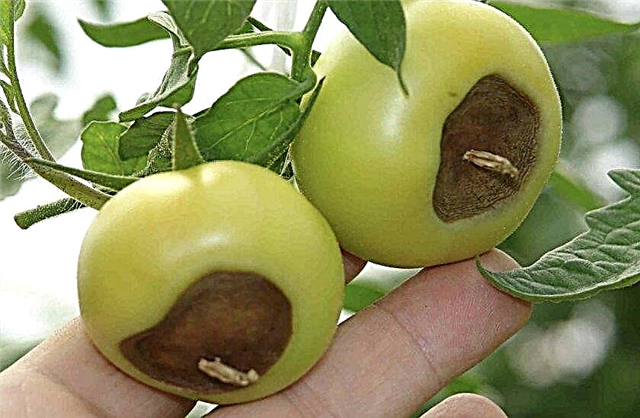
- if brown spots appear on the leaves and stems, this indicates anthracnose of tomatoes. Spraying with Fitolavin will help to get rid of it.
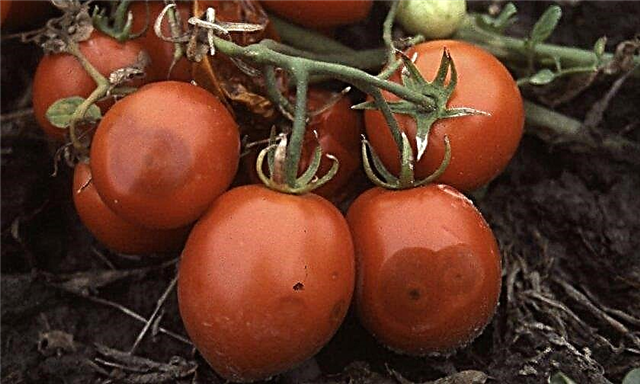
When tomatoes lack nutrients, moisture, they weaken and become easy prey for insect pests, including:Important! Most often, “cream” suffer from violations of the temperature regime and irrigation rules, because it is in such conditions that pathogenic organisms begin to emerge.
- a bear;
- wireworm;
- whitefly;
- gourd aphids.
- mechanical - collecting pests manually and washing the leaves with soapy water;
- chemical - by spraying with purchased drugs (“Bazudin”, “Arrow”, “Thunder”, etc.).
Harvest Dates
Depending on the type of cream, the ripening period also differs. On average, at least 110–120 days usually pass from the moment the first sprouts appear to harvest. Harvested fruits are recommended to be stored in a cool place, if possible - in the cellar. In such conditions, they will retain their freshness and excellent taste longer.But if you have unripe tomatoes, then let them lie still under the sun to ripen.
Harvested fruits are recommended to be stored in a cool place, if possible - in the cellar. In such conditions, they will retain their freshness and excellent taste longer.But if you have unripe tomatoes, then let them lie still under the sun to ripen.
For storage, tomatoes are laid with their noses down in plastic boxes, cardboard boxes lined with paper. In one container, it is recommended not to lay more than one bucket of tomatoes and store them unprocessed for no more than 1-2 weeks.
“Cream” is a popular group of tomato varieties with which most amateur gardeners are familiar today. Such fruits are famous for juicy and sugary pulp, excellent taste and high yield. Like many other tomatoes, “cream” is prone to late blight, they don’t like excess moisture, they require top dressing, so you need to carefully monitor these nuances.














